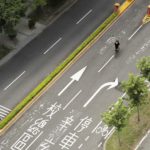 In an attempt to ensure economies remained somewhat robust during the Covid pandemic, there were extensive calls for investment in infrastructure to take advantage of the low interest rates that were prevalent at the time. While such projects sound attractive at the dispatch box, getting them delivered is usually far harder.
In an attempt to ensure economies remained somewhat robust during the Covid pandemic, there were extensive calls for investment in infrastructure to take advantage of the low interest rates that were prevalent at the time. While such projects sound attractive at the dispatch box, getting them delivered is usually far harder.
Research from China’s Guangdong University of Foreign Studies shows that they are worth the effort, however. There is a Chinese proverb saying that if you want to be rich, then you first need to build roads, and the researchers wanted to explore just how effective road infrastructure is at supporting regional economic growth.
Fueling growth
The researchers utilize data on the country’s national trunk highway system (NTHS), and they found that while there have been five vertical and seven horizontal national trunk highways built between 1998 and 2007, the benefits of these roads have not been felt by all regions, nor indeed the businesses operating within them.
“Transportation infrastructures create economic connections between regional central cities across the country, and connect small and medium-sized cities along the route,” the researchers explain. “In theory, this reduction in time and space distance promotes transportation accessibility, reduces transportation costs, and improves transaction efficiency and economic growth.”
The analysis found that while connecting regional enterprises with big cities improved their ability to specialize, these regional enterprises remained towards the lower end of the industrial value chain compared to their big-city peers. Indeed, the researchers believe that many of the gains from the infrastructure improvements are concentrated in the big cities.
“In fact, due to the high volume of traffic on the roads, high-quality production resources tend to cluster in the big cities,” they explain. “The flow of labor and intermediate goods and services, in other words the inputs into the provision of final goods and services, are particularly sensitive to these transportation conditions. This makes light industry and labor-intensive enterprises more vulnerable to the big city cluster effect.”
The researchers believe that their findings shed new light on the potential for infrastructure developments to boost economic prosperity, especially as the motivations for such projects often include spreading prosperity more broadly.
“We should be aware that the improvement of transportation conditions leads to the redistribution of economic resources, namely, the economic distributional effect,” they conclude. “Local governments and policymakers should pay high attention to this.”